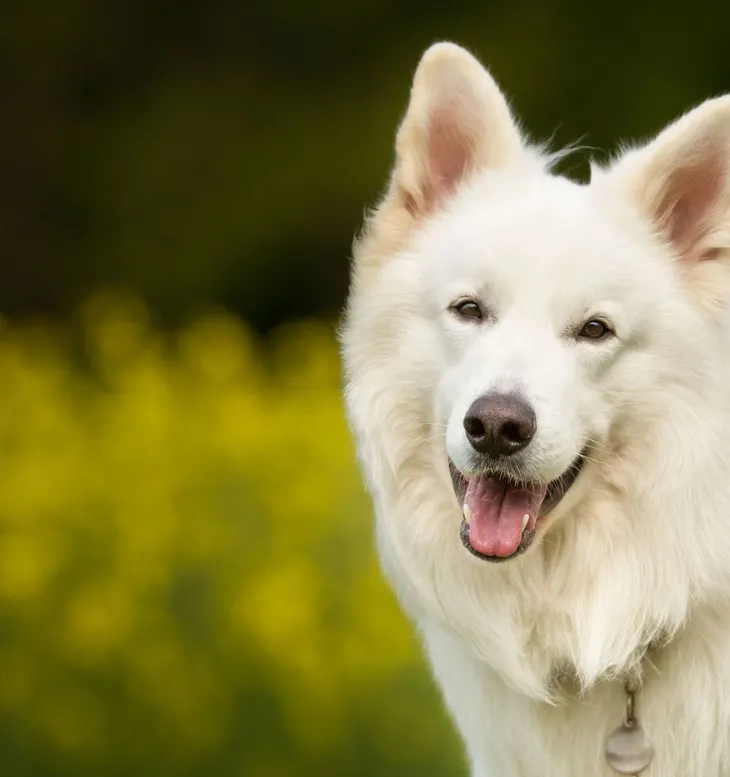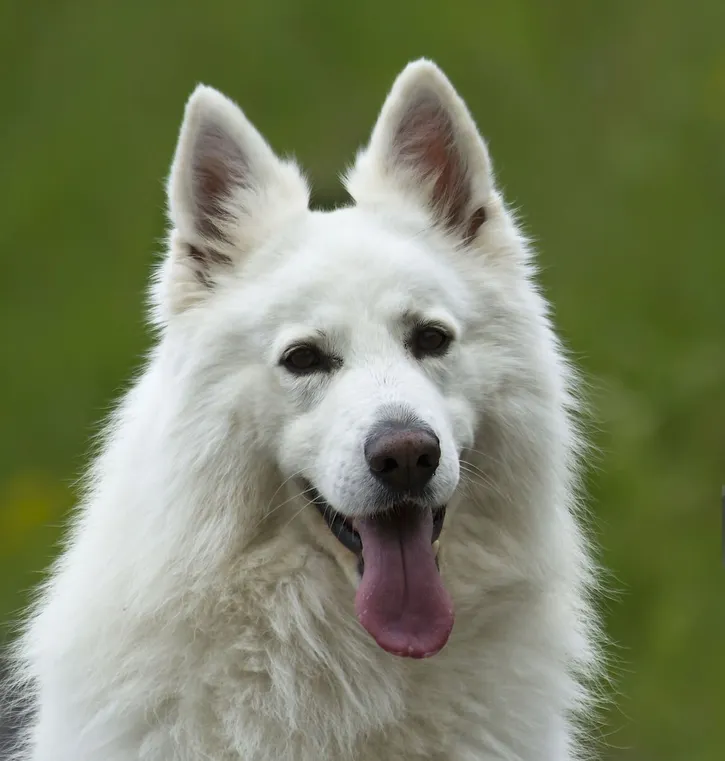The White German Shepherd is a strikingly unique variation of the traditional German Shepherd, standing out not only because of its beautiful white coat but also for its incredible intelligence, loyalty, and gentle nature. If you’re thinking of adopting one, there are a few things to consider, including their characteristics, how to care for them, and ways to keep your pet care routine eco-friendly.
In this post, we’ll dive into everything you need to know about White German Shepherds, including their personality, appearance, training needs, and practical tips for providing sustainable care.
Characteristics of the White German Shepherd
1. Temperament
White German Shepherds share many of the same behavioral traits as their traditional counterparts. However, they are often noted for being a little gentler and more approachable in demeanor. Here are some key characteristics:
- Intelligent and Trainable: Like all German Shepherds, the white variety is highly intelligent and easy to train. They excel in obedience training and are often used in service roles because of their problem-solving abilities.
- Loyal and Protective: These dogs are incredibly loyal and protective of their family. They make excellent guard dogs while also being gentle companions.
- Energetic: White German Shepherds are active dogs that require plenty of exercise to stay healthy and happy. Without proper stimulation, they can become bored and destructive.
- Gentle and Loving: Though protective, White German Shepherds are also known for their gentler nature compared to the more traditional German Shepherds, making them great family pets.
2. Appearance
The defining feature of the White German Shepherd is, of course, its stunning white coat. While most German Shepherds have a combination of black and tan fur, the white coat comes from a recessive gene. This gives the dog an elegant and regal look, but it also means that their coat requires regular care to keep it clean and shiny.
- Size: They are a large breed, generally weighing between 50-90 pounds and standing around 22-26 inches tall.
- Coat: Their double-layered coat is thick and can either be short or long, depending on the specific lineage.
Practical Tips for Adopting a White German Shepherd
If you’re considering adopting one of these beautiful dogs, it’s important to know what you’re getting into and how to prepare. Here are some practical tips to ensure your adoption experience is smooth:
1. Find a Reputable Breeder or Rescue Group
If you’re set on adopting a White German Shepherd, make sure you choose a responsible breeder who prioritizes the health and temperament of the dogs over their appearance. Unfortunately, some breeders prioritize appearance and overbreed, which can lead to health and behavioral issues. Always ask for health clearances and research the breeder’s reputation.
Alternatively, many rescue groups focus on German Shepherds, including the white variety. Adopting from a rescue can give a deserving dog a second chance while supporting ethical pet care practices.
2. Prepare for a High-Energy Lifestyle
White German Shepherds need a lot of physical and mental stimulation. Without enough exercise, they can develop behavioral problems like chewing or excessive barking. Make sure you’re ready for:
- Daily walks and playtime: These dogs require at least an hour of vigorous exercise each day, whether that’s through walking, running, or games like fetch.
- Mental stimulation: Puzzle toys, training exercises, and even learning new tricks are great ways to keep their sharp minds engaged.
3. Early Socialization is Key
As with any German Shepherd, early socialization is important. This ensures your dog grows up well-adjusted and comfortable around other people, dogs, and in different environments.
- Expose them to new experiences: Take them to dog-friendly parks, introduce them to new people, and let them experience different environments.
- Obedience training: White German Shepherds respond well to training, and they thrive with consistent, positive reinforcement techniques.
Eco-Friendly Care Tips for Your White German Shepherd
As a pet owner, you can take steps to minimize your dog’s environmental impact. Here are a few ways to make your pet care routine more eco-friendly:

1. Choose Sustainable Dog Food
When selecting food for your White German Shepherd, opt for brands that use sustainable practices, such as sourcing organic ingredients or using environmentally-friendly packaging. Look for high-quality dog food with natural ingredients that support your dog’s overall health while minimizing waste.
- Homemade dog food is another great option, allowing you to control exactly what goes into your dog’s diet. Just be sure to consult with a vet to ensure it’s balanced and meets all of your dog’s nutritional needs.
2. Opt for Eco-Friendly Grooming Supplies
White German Shepherds need regular grooming to keep their thick coats healthy and clean. Using eco-friendly grooming supplies can help reduce waste and exposure to harsh chemicals.
- Shampoos and conditioners: Look for organic, biodegradable options that don’t contain harmful chemicals.
- Brushes: Choose brushes made from sustainable materials like bamboo or recycled plastics to reduce your environmental footprint.
3. Reduce Waste with Biodegradable Products
From biodegradable poop bags to sustainable toys, there are many ways to reduce waste while caring for your dog. Choose toys made from recycled materials, and if possible, repurpose household items to make your own DIY dog toys.
4. Conserve Water During Baths
German Shepherds don’t need frequent baths, but when they do, try to minimize water usage. Using a low-flow showerhead or turning off the water while lathering can help conserve water. Also, consider letting your dog air dry instead of using an electric dryer, which helps save energy.
Common Health Issues in White German Shepherds and Prevention
White German Shepherds are prone to similar health issues as regular German Shepherds. Here are some of the most common ones and how to prevent them:

1. Hip and Elbow Dysplasia
This is a common genetic condition in larger breeds that affects the development of the hip or elbow joint, leading to arthritis.
- Prevention: Make sure your dog maintains a healthy weight and gets regular, low-impact exercise. Early screening and monitoring by a vet are also crucial.
2. Allergies
White-coated dogs may be more prone to skin issues and allergies. These can be triggered by environmental factors, certain foods, or even grooming products.
- Prevention: Use natural, hypoallergenic shampoos and keep your home clean from allergens. Also, be mindful of any reactions your dog may have to new foods.
3. Deafness
Although rare, some White German Shepherds may be more prone to congenital deafness due to their recessive gene.
- Prevention: Have your dog’s hearing tested early on to identify any issues, and if needed, learn how to communicate with them using hand signals.
A Striking Companion with Sustainable Care
Adopting a White German Shepherd is a rewarding experience. With their intelligence, loyalty, and gentle demeanor, they make wonderful companions for individuals and families alike. Whether you’re looking for a protective guard dog or a playful family pet, these dogs are sure to bring joy and companionship into your life.
By incorporating eco-friendly practices into your care routine—whether it’s through sustainable food choices, biodegradable products, or minimizing waste during grooming—you’ll not only be providing excellent care for your pet but also making a positive impact on the environment.



